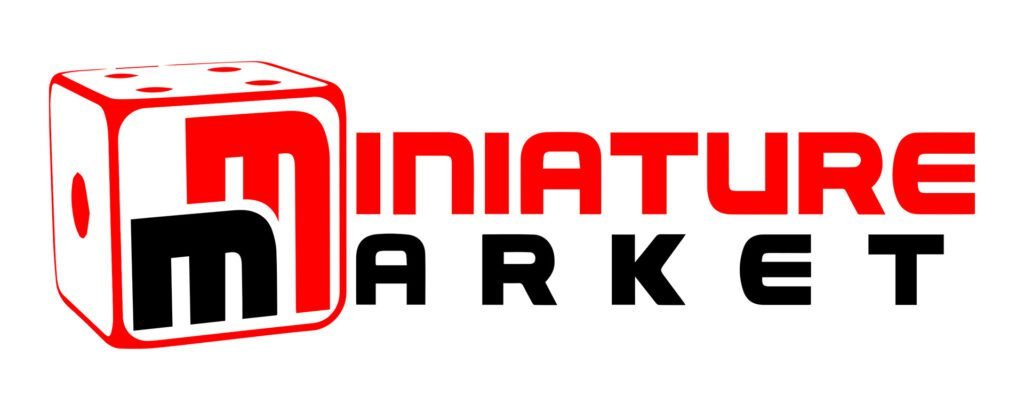
Today we’re diving into “Age of Innovation.” This game is essentially a reprint of Terra Mystica with some tweaks & fresh additions, but does it live up to its predecessor? Let’s break it down — what it is, what’s good, what’s bad, & whether you should pick it up. Let’s get into it.
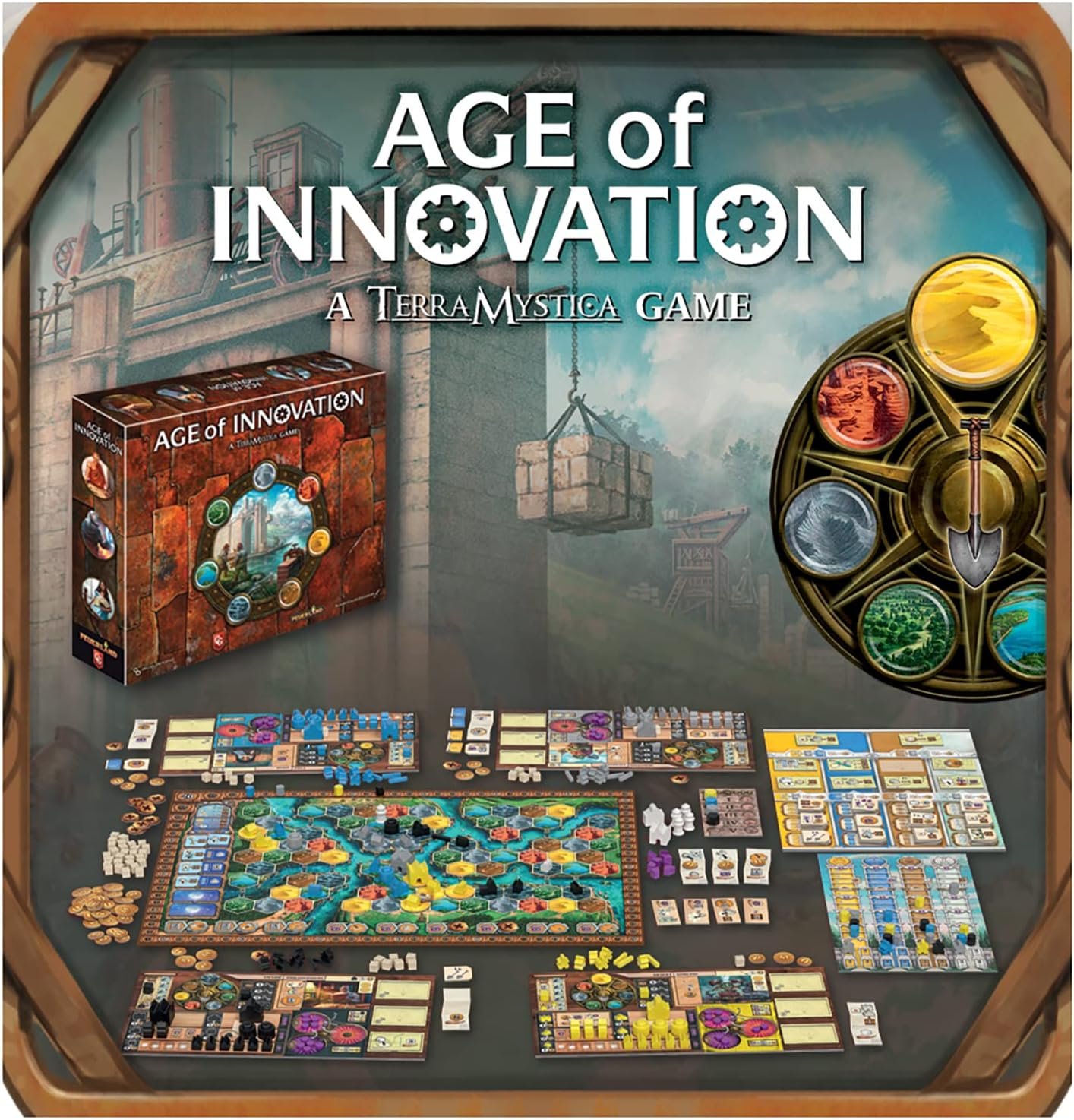
What It Is
“Age of Innovation” is a heavy Euro game for 1-5 players that builds on the Terra Mystica foundation. Players control unique factions, aiming to terraform landscapes, build structures, & score victory points through area control & engine building. If you’ve played Terra Mystica, you’ll feel right at home, as around 90% of the rules remain the same. The goal is to expand your faction’s reach while managing resources & outmaneuvering your opponents.
Check Out These Recent Board Game Sales
- Board Game Sale: Disney Villainous 25% Off!
- Board Game Sale: Marvel: Crisis Protocol Core Set 30% Off!
- Board Game Sale: 7 Wonders Available for 17% Off!
Gameplay Overview
“Age of Innovation” immerses players in the role of a race with unique abilities and terrain preferences. The objective is to terraform, build, and spread across the land while collecting knowledge, making innovations, and advancing in various sciences to accumulate the most points and win.
Setting up the game begins by placing the board centrally. The board has two sides, one for 3 to 5 players and the other for 1 to 3 players, with the latter presenting a greater challenge in a three-player game. Shuffle the 12 round scoring tiles and place them on the left side of the board, ranging from round six to round one. Pay attention to specific placement rules, such as not placing a spade tile in slots five or six and ensuring not all tiles show the same discipline in the first five rounds. Finally, position the final round score tile appropriately and return any unused tiles to the box.
Next, prepare the game components by mixing the six book action tiles and placing three face-up in the designated spaces on the board. Arrange the turn order board and science display next to the main board, choosing the appropriate side of the Innovation display based on player count. For a two or three-player game, place the large board underneath the initial board; for four to five players, insert the middle board first. There are also 48 competency tiles to organize, placing 12 starter tiles on the Innovation display and stacking the remaining tiles into piles. Additionally, prepare the red back Palace tile and place extra tiles for each player plus one.
Players then select their starting bonuses and terrain by choosing a set of three cards and tiles, including planning displays, faction tiles, and bonus tiles. Each player’s starting position is influenced by their chosen terrain and the buildings they receive. Workshops are placed on native terrain spaces, followed by the remaining players in reverse order. Ensure that all pieces are correctly positioned as per the game’s setup rules.
Gameplay unfolds over six rounds divided into income, actions, and science bonus phases. During the income phase, players gather uncovered resources, including tools, coins, and scholars. Points are scored based on books collected, with each book symbol allowing movement up on science tracks. Power is managed by moving tokens between bowls, with specific rules for how power is gained and utilized.
The action phase allows players to choose from nine available actions detailed on a player aid card. Actions include terraforming and building, upgrading buildings, increasing sailing or terraforming abilities, and developing innovations. Each action requires a strategic approach, whether it’s terraforming new land, constructing buildings, or advancing in science tracks. Special actions and conversions of resources are also part of the gameplay, adding complexity and depth.
The final phase of each round is passing, where players drop out of the current round and gain any relevant bonuses from their round bonus tile. After all players have passed, the round ends with a check of science bonuses and preparation for the next round. In round six, the game concludes with additional scoring based on building groups, science track positions, and resource conversions. The player with the highest total points wins, and ties are resolved by sharing the victory.
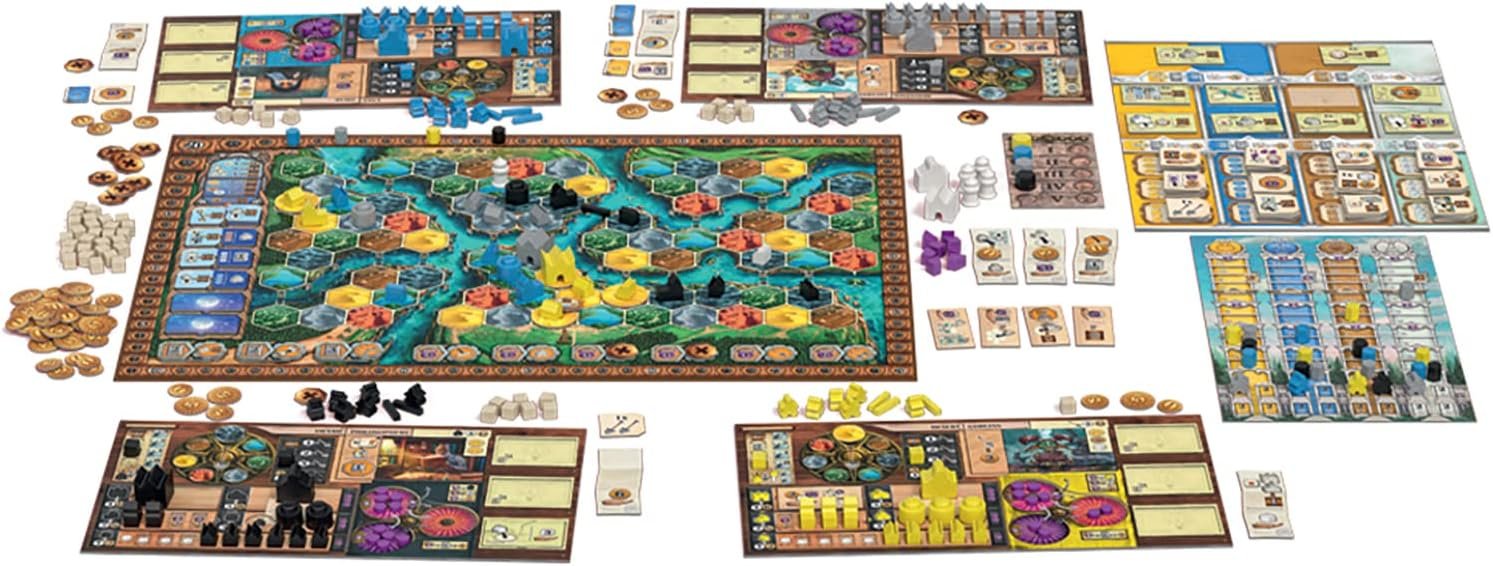
The Components
The components in “Age of Innovation” are high quality, featuring thick cardboard tiles, wooden pieces, & large tarot-sized cards. The artwork is brighter & more colorful than Terra Mystica, which is a nice upgrade. However, the color coding might be a problem for colorblind players. Overall, it’s what you’d expect from a premium Euro game—solid, durable, & designed for multiple plays.
The Good
First off, the setup & asymmetry are huge improvements. You can mix & match factions with different terrains, leading to tons of replayability. Each faction has unique abilities & bonuses, which gives you different strategies to explore every time you play. Whether it’s reduced costs for actions, extra power generation, or higher income, the variety adds a lot to the overall experience.
The new Science Display is also a standout feature. Instead of the old guild tracks from Terra Mystica, this new system allows you to focus on specific scientific advancements, giving you more control over your strategy. Advancing in these tracks rewards you with power generation, victory points, & more.
Replayability is off the charts here. The mix of terrains, factions, & innovation tiles ensures that no two games feel the same, & the modular setup keeps things fresh. Fans of Terra Mystica will love the new options & deeper strategic elements.
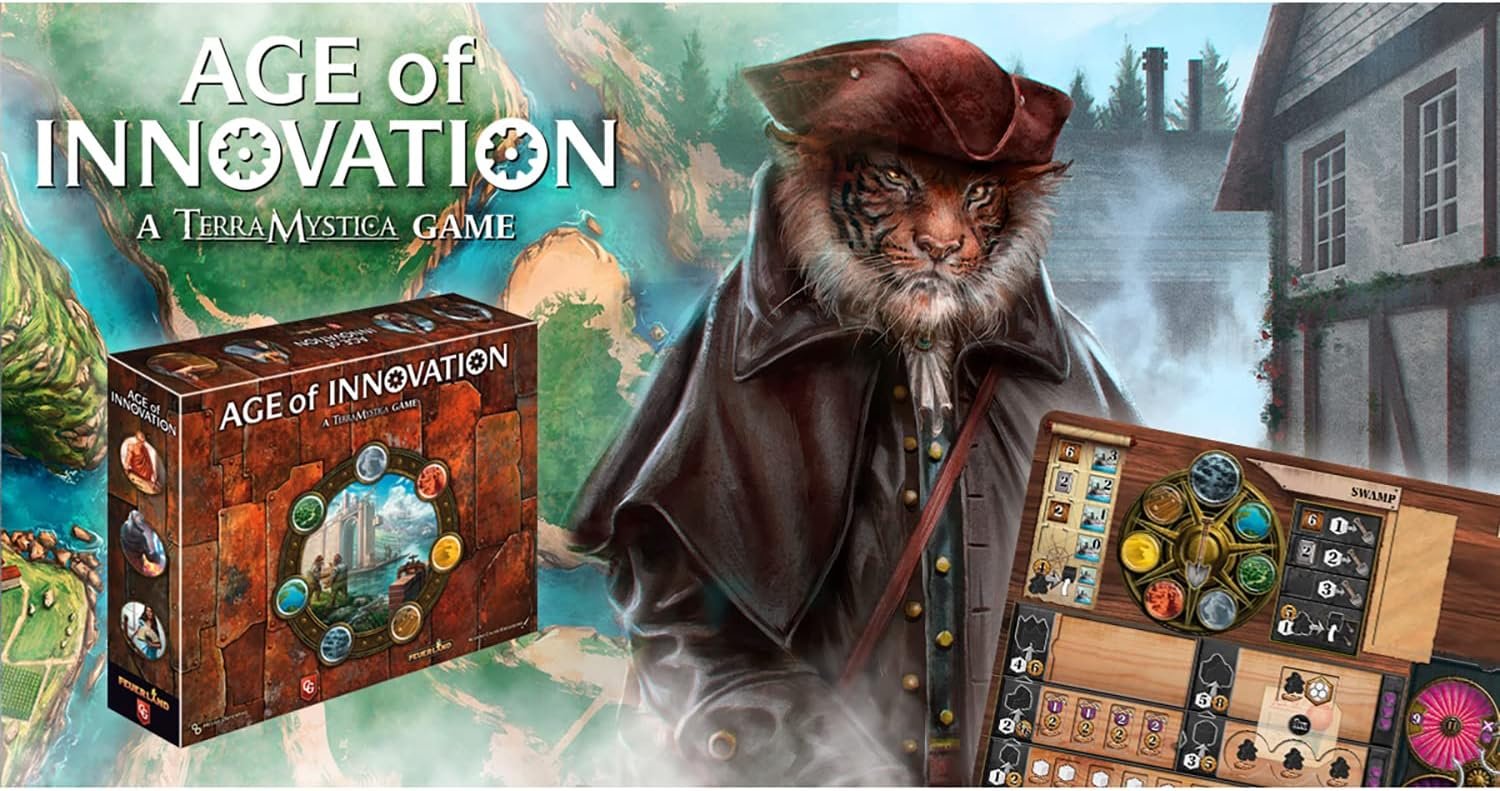
The Bad
However, “Age of Innovation” isn’t without its drawbacks. Like Terra Mystica, it’s a heavy Euro game, & that complexity can be a turn-off for newer players. Early mistakes can be punishing, & it’s not always easy to recover if you fall behind. The game’s “rich get richer” nature means experienced players might steamroll newer ones.
While the asymmetry & setup options add depth, they also add a lot of complexity. Some players might find it overwhelming, especially when first learning the game. Additionally, the new book resource & innovation tiles, while interesting, can feel a bit tacked on & might take a while to fully grasp.
And finally, the reliance on color coding in the components could be a major issue for colorblind players, making it harder to differentiate between key elements of the game.
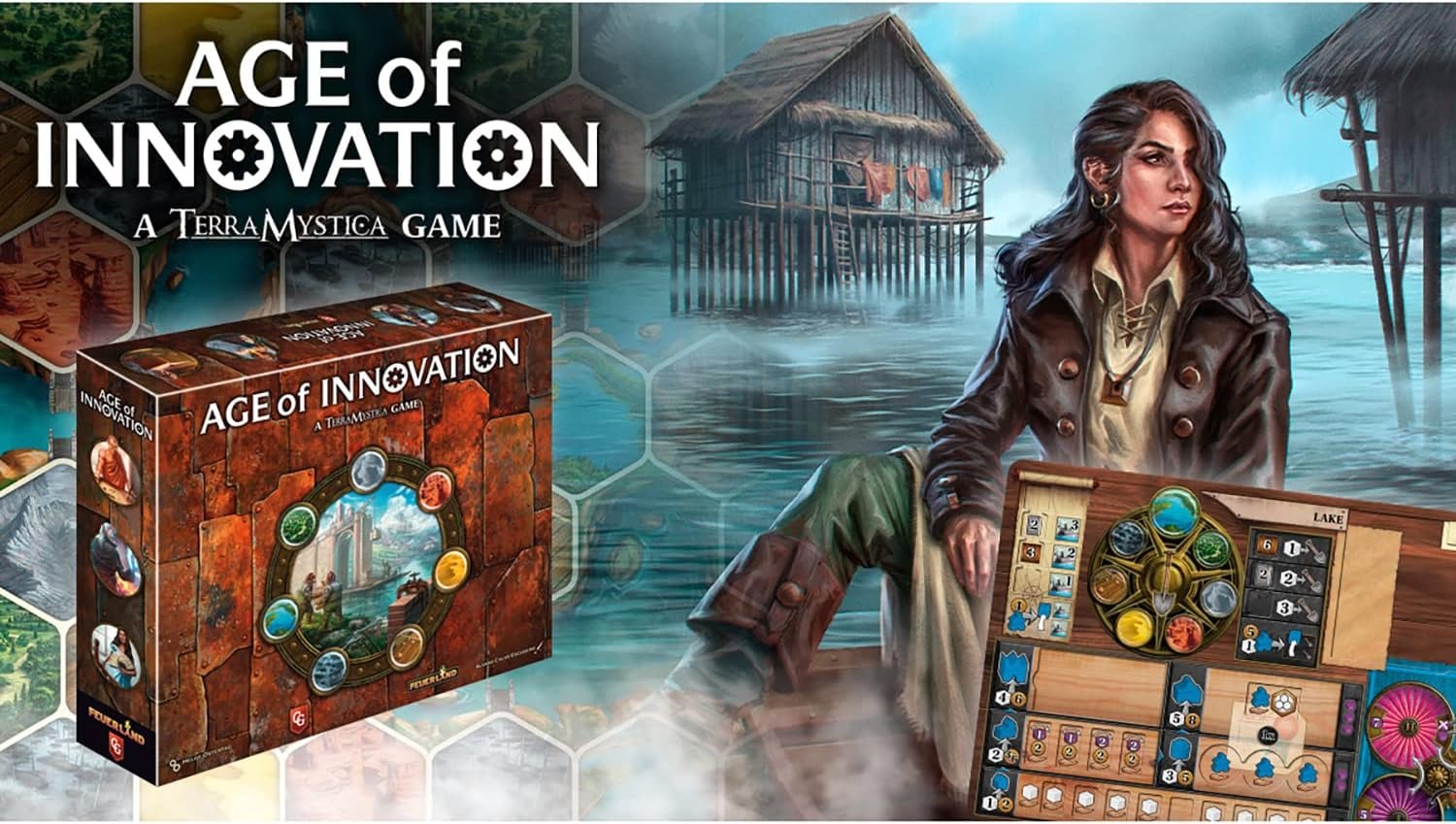
The Verdict
So, should you buy “Age of Innovation”? If you’re a fan of Terra Mystica, this is almost a no-brainer. The game takes the best parts of the original & enhances them with more variety, better asymmetry, & deeper strategic choices. The new mechanics, like the Science Display & innovation tiles, add layers of strategy that will keep you coming back for more.
If you’re a newcomer to heavy Euro games, be prepared for a bit of a learning curve. The game can be punishing if you don’t plan ahead, & it’s definitely not the most forgiving for new players. But if you’re up for a challenge & enjoy games that reward deep strategy & long-term planning, “Age of Innovation” is a must-try.
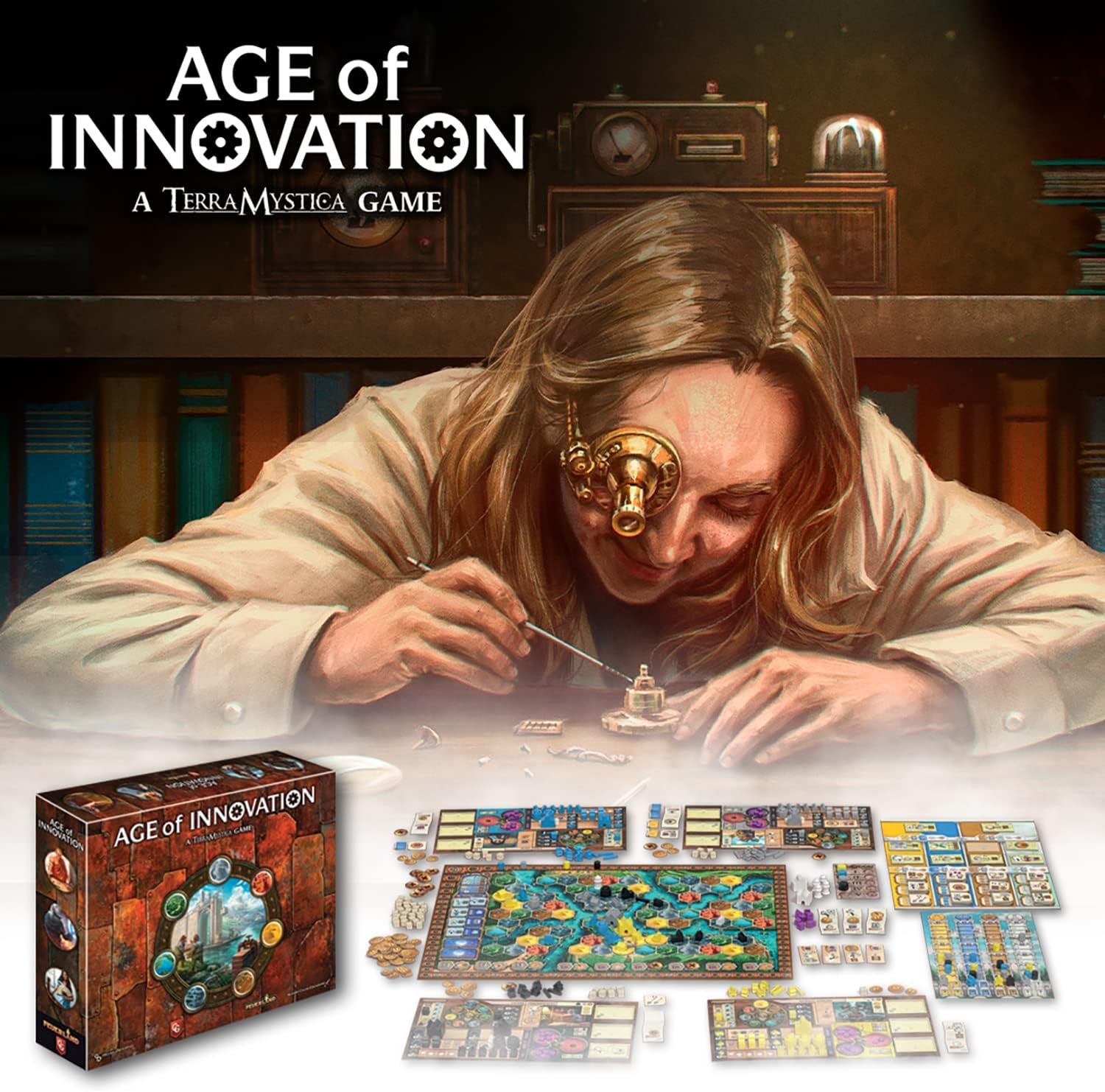
Final Thoughts
Age of Innovation delivers an engaging and immersive experience right from the start, and there’s a lot to love about this game. One standout feature is the unique player boards tied to each terrain and faction. These boards grant distinct advantages, like better income or enhanced sailing capabilities, adding a layer of strategic depth and customization to the game. The palace tiles, while only coming into play when you build your palace, require careful consideration to ensure they synergize with your other strategies.
Once the game kicks off, it retains the core mechanics from Terra Mystica but introduces new elements like innovations and certifications. The gameplay revolves around placing buildings to score points and form cities, with strategic placement being crucial. Building close to opponents can be advantageous since some buildings become cheaper when adjacent to others, and it also benefits both players with increased power generation.
The complexity of Age of Innovation is a significant step up. You’re limited to building on your designated terrain type and must navigate the game’s seven terrain types with a terraforming mechanism that costs shovels. The ability to build only adjacent to your existing structures adds another layer of planning. Some factions can cross rivers or build bridges to expand their reach, while others will need to strategize carefully to overcome these obstacles.
The Science Display adds another strategic dimension. Unlike previous titles in the series, Age of Innovation offers a more dynamic way to advance through scientific tracks. Upgrading to schools, for instance, not only provides a scholar but also boosts your progress on the Science Display, making it a crucial element for long-term success. The addition of books as a resource introduces even more strategic options, allowing players to unlock powerful innovations that can significantly impact gameplay.
The game succeeds in integrating these diverse mechanics into a cohesive whole. The balancing act between building up your city, advancing science, and managing resources is both challenging and rewarding. Each decision, from drafting tiles to expanding your city, is filled with strategic possibilities, making every turn a careful calculation.
However, Age of Innovation is not for the faint-hearted. Its complexity and depth can be overwhelming for new players, though the dedicated solo mode offers a chance to learn the ropes at your own pace. For those who enjoyed Terra Mystica and Gaia Project, this title is a worthy addition, offering fresh mechanics and deeper strategic layers. If you’re up for the challenge and enjoy heavy Eurogames, Age of Innovation is definitely worth exploring.
Purchase Options


At no extra cost to you, The Board Game Site may receive revenue from affiliate and advertising partnerships for sharing this content and from purchases through links.



